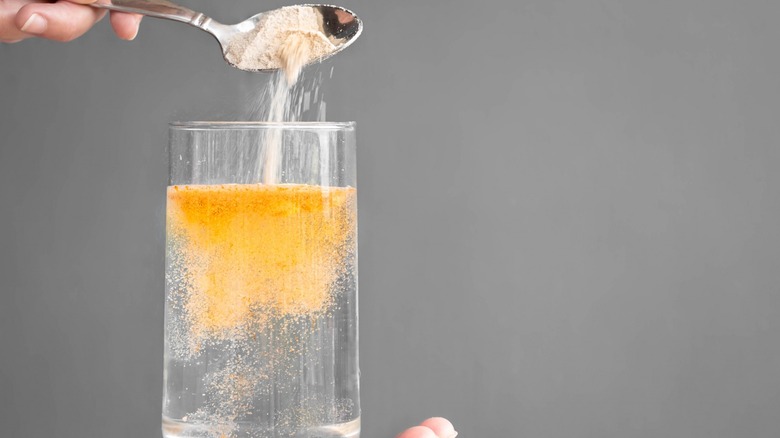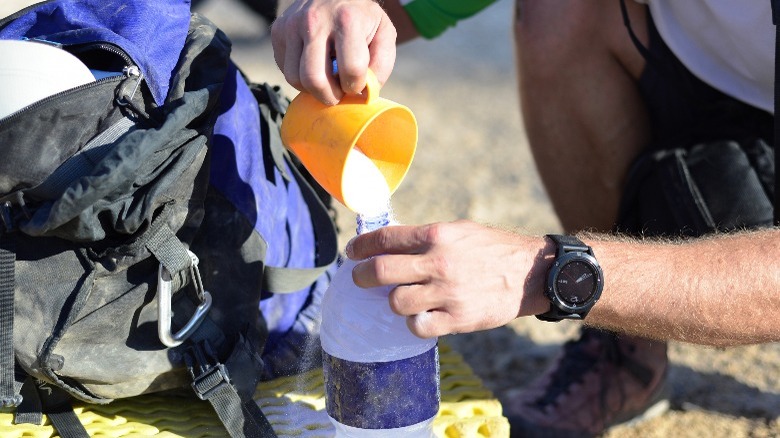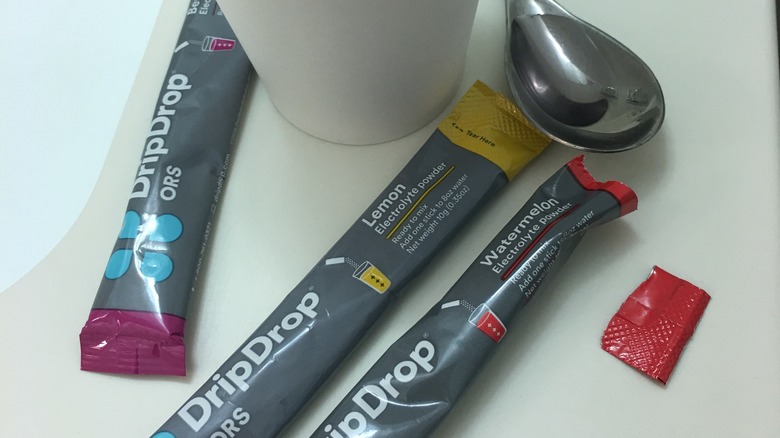We Now Know Exactly What Is In Those Hydration Packets
If you've ever felt like collapsing after a long workout, had a nasty bout of diarrhea, or lived through a killer hangover, you may be familiar with the powdered hydration packets that have become commonplace in pharmacies and supermarkets. These pocket-sized sleeves contain a flavored mixture you can pour inside of your water bottle to help with dehydration after overexertion and water loss. These packets are reportedly more effective than water because they contain electrolytes, usually sodium, calcium, magnesium, potassium, and chloride, not in regular bottled or tap water.
Electrolytes help your body function properly by aiding the chemical reactions that maintain fluids. Although water is obviously essential for hydration, electrolytes help process water more effectively. When you sweat, vomit, or have diarrhea, you lose these essential electrolytes, and while you can drink more water to replenish your fluids, you've lost the component that helps the water hydrate you. This isn't a life-threatening situation since you can replenish electrolytes with food, but you might experience more symptoms of dehydration, like fatigue and muscle soreness.
When do you need hydration packets?
Electrolyte packets can be handy for supplementing workouts or helping a stomach bug, but you don't necessarily need to drink them every day. A steady stream of water throughout the day is usually all that's needed for a healthy person. While browsing articles on the Internet, you may hear that an alarmingly high 75% of Americans are dehydrated, but there's no medical evidence to back this claim up. Still, according to a 1999 study published in Clinics in Sports Medicine journal, people exercising for more than 90 minutes should consider electrolyte supplementation, especially when the temperature is particularly hot.
Different brands of electrolyte powders have varying levels of ingredients, and some are better for hydration than others. For instance, Bare Performance electrolyte powder has 500 mg of sodium per serving, a higher amount than the comparative 330 mg per serving in the DripDrop brand and the 135 mg per serving in the Vitalyte brand. Some of these brands even offer caffeine, although it's important to remember that its diuretic effects might offset at least part of the hydration effects. The most controversial additive to these packets, however, is the sugar used to create their tasty flavorings.
Should you worry about the sugar?
Although it's certainly possible to have too much of one type of electrolyte just as it's possible to have an electrolyte deficiency (too much sodium is a common type of electrolyte imbalance due to its omnipresence in packaged food), it's still difficult to overdose on hydration powder alone. Instead, it's the sugar inside of these packets that you'll have to monitor the most. The complicated part of all of this is that, in moderated doses, glucose actually helps to hydrate you, but can cause the opposite effect if you go overboard since your body uses excess water to absorb the excess sugar.
That's yet another reason to use hydration packets after strenuous physical activities or other situations where you are actively losing hydration instead of as a regular daily supplement. There are lots of brands that carry sugar-free options, but you might actually be losing out on the full hydration benefits that a little bit of glucose can provide. The bottom line is that although hydration packets can provide all the necessary electrolytes to replenish your lost supply, they shouldn't replace water entirely as your primary source of hydration.



